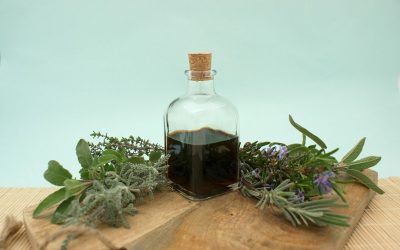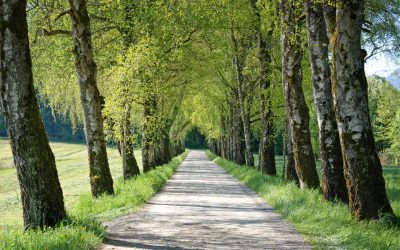Nature Notes:
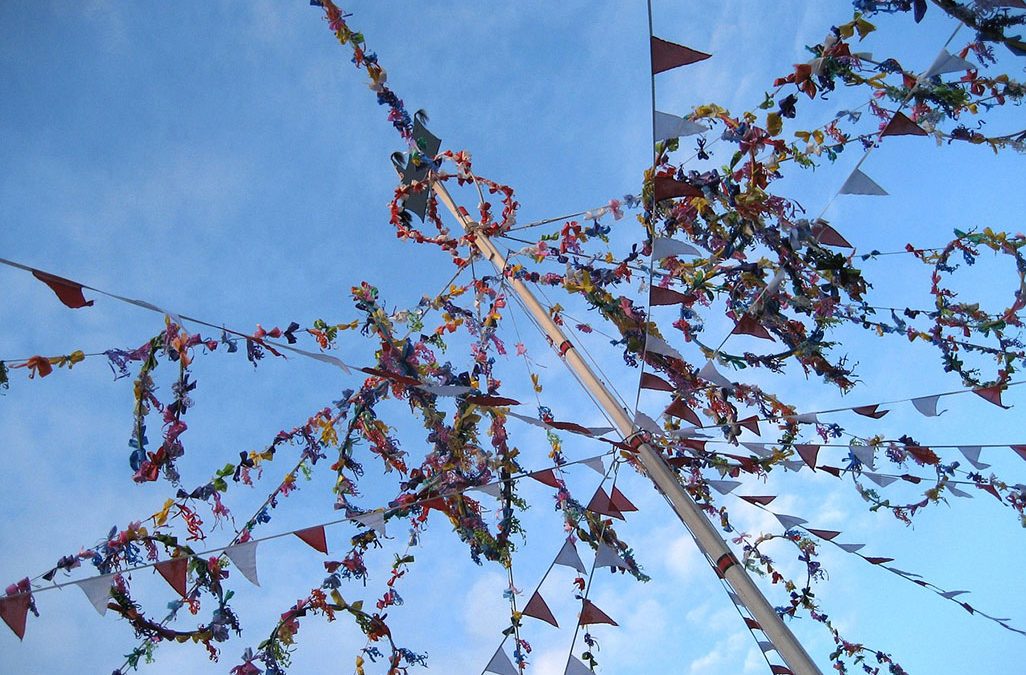
Happy Beltane!
Happy Beltane!
On May 1, we celebrate Beltane, the festival of spring.
Mother Earth is donning her lushest gown of flowers and blossoms, and birds are singing from the trees. The heart rejoices, and the spirit soars!
Beltane is the season of blossoming fertility, joy, abundance and creativity. We celebrate the sheer miracle of life in all its beauty.
The God and the Goddess embody the undying force of life, and they are in love. Nature mirrors their bliss. Their dance turns the land green and lush with every step. Every fragrant flower is a kiss and a blessing, a sign of their adoration.
We are invited to join them and share in their passion. Let’s celebrate life! Beauty, love, and merry-making are our rituals, and the energy is tangible.
Gardeners witness and partake in this magic as they nurture young seedlings. But even if you don’t have a garden, you can still participate – just tend to your inner garden! Pour energy into your budding projects, and you will experience a similar phenomenon – the magic of creativity.
The secret ingredient of manifestation is the love and nurture with which we tend to our seed ideas.
Take the time to reflect on Mother Nature’s generosity, and practice gratitude and mindfulness to attune to every nuance of this blessed season.
Photo credit: Image by Ronny Overhate from Pixabay
Current issue

Preserving the Harvest (1)
This article is about ways to preserve the harvest. Making your own pickles and preserves, jams and chutneys, liqueurs and canned veggies is a great way to celebrate the abundant gifts of nature. If you can get the kids involved, it is also a wonderful opportunity to bond and share stories while teaching them essential life skills.
Not too long ago, gardening and making one’s own food was considered old-fashioned and tedious work. It was something that belonged to the domain of Grandmothers and country bumpkins. Why bother, if all you need to do is to go down to the supermarket?
But things have changed. Soaring food prices, GM technology and a growing concern over dubious agrochemicals that have crept into our food supplies, more people have turned to gardening and making your own is fashionable again.
While the garden may not cover all your food needs, even producing some of your own food is uniquely satisfying. However, there is one problem: living in a temperate climate, with a limited growing phase, we are subject to the ‘feast or famine’ phenomenon. The harvest is plentiful during the warm part of the year, but there is almost nothing to harvest during the winter.
With any luck, the harvest is plentiful enough to provide for the cold season as well – but how can we preserve the abundance, so when winter comes we can still enjoy the fruits of the previous season’s labor. What delight it will be then to have tasty reminders of the summer’s plenty.
Freezing
These days, freezing is usually considered the easiest and quickest method to preserve anything. It certainly is convenient – if you have a very large freezer, that is. However, it is not a very energy efficient method, and nor is it particularly reliable. Power cuts occur with worrying frequency. And they spell disaster for anything that is stored in the freezer, unless you have an independent back-up power supply.
Luckily, there are many other options as we can learn from history. How did people manage to store things in the days before electricity lit up our world? After all, it is a fairly new invention!
It turns out, our ancestors have been incredibly innovative when it comes to devising methods of preserving foods, although not all are equally suitable for all types of foods and vegetables.
To begin with, it is helpful to consider the growing cycle. The natural life cycle of a plant starts with germination. Gradually, the plant develops and grows and eventually reaches its peak. This process is known as maturation. Most plants are harvested at their peak. From that point on they begin to decay.
No process of preservation can halt this natural cycle of growth and decay, it can only slow it down, or in some ways, progress it. The ultimate aim is to preserve as much of the mineral and vitamin content of a given fruit or vegetable as possible.
Clamps
In the old days, root vegetables such as potatoes, carrots and parsnips were stored in the cellar. They were kept in boxes filled with earth, which were periodically sprinkled with water to keep them moist. In fact, the original purpose of cellars was to provide a cool, dark storage space for foods. Originally, they would have only had a dirt floor. This creates a moist, cool atmosphere that is able to ‘breath’. Unfortunately, modern houses, with their concrete foundations, insulated basements and concrete floors are much less suitable for storing vegetables. That is why people came up with the idea of these special boxes, which imitate the natural conditions.
But even without any kind of basement it is still possible to store vegetables – in a ‘clamp’. A clamp consists of a mound of root vegetables that is laid out on a thick layer of straw, which in turn is covered with earth. Alternatively, one can dig a pit. The base is laid out with wooden planks and straw. The vegetables are stored in the next layer, which is covered and covered with sand and earth. (For instructions, check with a good book on self-sufficiency).
It is important to ensure ventilation – e.g. by allowing the bottom layer of straw to peek through beneath the covering layers of soil. Unfortunately, these methods only work in places where winter temperatures don’t fall too low.
Carrots can be stored in containers filled with sand (or in clamps, as described above). They should not be washed and must not be damaged, otherwise they will rot. The green parts should be removed.
Sunchokes, parsnips, leeks, celery and Brussels sprouts can remain in the ground. Mild frosts don’t bother them. If need be, a layer of soil, straw or mulch will protect them against damage from hard frosts. Cauliflowers can be ‘planted’ (with roots attached) in boxes filled with sandy soil. They should be sprinkled with water once in a while.
For a limited period of time, cucumbers, melons and pumpkins can be stored in suspended nets. But their high water content makes them liable to rot, especially if they have been bruised.
Onions and garlic should be spread out in the sun until the outer layers dry and turn papery. Thereafter, they can be bundled and hung.
Apples can be stored in a cool, moist, but aerated basement. But, they must be handled gently. Bruised apples will rot. Late varieties are more suitable for long-term storage. Early varieties are better used for immediately. Ideally, apples should be picked as late in the season as possible, when they come off the tree without effort. They should be spread out to dry for a day or so, and then stored singly (wrapped in paper, if possible) and placed on a shelf or in small cardboard storage boxes. Pears can be stored the same way, but prefer slightly cooler temperatures.
Chestnuts keep well in clamps. Check for tiny holes in their shells, which is a tell-tale sign that they are infested with worms. Pulses and grains can be stored in hessian bags. The bags can be treated with neem spray to deter bugs. Shake the bag occasionally to inhibit the development of insect larvae.
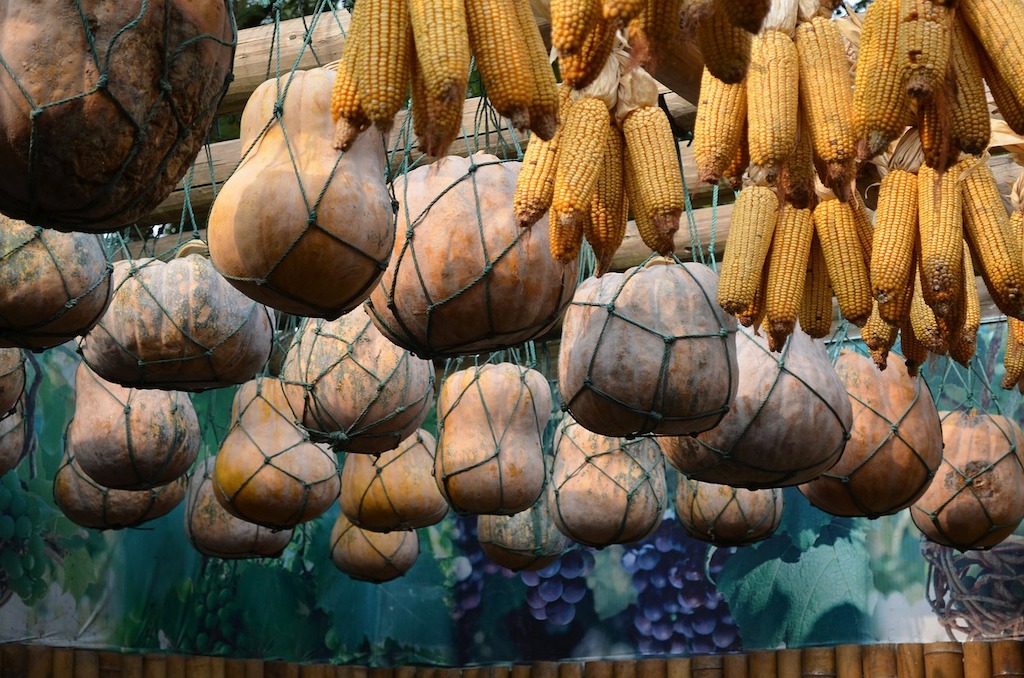
Dehydration
One of the best methods to preserve fruits and vegetables is to dehydrate them. This method has the advantage that the ‘natural goodness’ is largely preserved, since only the water is extracted. In hot and dry climates, vegetables and fruits can be dried in the sun, or on special racks. In the colder time of the year, the rack is placed near the fire place or oven. It is difficult to sun dry fruit and veggies in modern apartments. However, one can use the oven to help the process. Arrange the prepared fruit on racks (rather than cookie sheets) that are lined with baking paper. Obviously, thin slices dry faster than thicker ones and juicy fruits take longer than dryer types. The greatest difficulty is to get the temperature right, since many of the nutrients are destroyed at temperature above 40°C. The lowest setting on the dial is usually 50°C degrees (100F). It is better to dry things at a lower temperature for a longer period of time. Keep the oven door slightly ajar to modify the temperature and to let the steam escape.
But even so, keeping the oven running for long periods of time is not very energy efficient and is also a nuisance during the summer, when it is difficult enough to keep the room temperatures bearable.
The best option is a dehydrator. The lower the wattage, the lower the electricity use will be. The best models are expandable (all you to add extra racks), have a timer and an accurate temperature regulator.
To prevent discolouration dip fruits that are vulnerable to oxidation in lemon water (50:50) before drying them. This preserves the natural color. Once dry, and aired out, store the dried goods in air-tight containers (storage jars). Dried fruit and vegetables can keep for ages, as long as they are stored properly. But if they absorb moisture from the atmosphere they will go moldy.
Very juicy fruit should drain for a period of time to reduce the amount of moisture (e.g, pineapple) before drying. Cut the fruit to the desired size and drain in a colander for at least an 1 hour.
Air-drying fruit also has advantages and disadvantages. The main advantage is that it saves on electricity and can be done at a lower temperature, which preserves the vitamins. The disadvantage is that the drying fruit will attract fruit flies. Prolonged drying also encourages mold.
Drying fruit and vegetables correctly requires a bit of practice. Dehydrators make the process a great deal easier and less messy. A major advantage is that the dried material takes up much less space which is handy for storage. Also, dried fruit and veg keep well for long periods of time if stored correctly.
Fruit Leather
Spread pureed fruit blended with honey and ground almonds, or hazelnuts on baking paper, and dry. Fruit Leather is a very popular snack that also makes an excellent, instant energy, hiking food.
Dried vegetables can be rehydrated by soaking them for a few hours in enough water to cover them; slowly cook them with the remaining water. It took time to remove the water, and it takes time to reabsorb it. If prepared too quickly the veggies will be chewy. The smaller and thinner the slices, the quicker they will reabsorb the water.
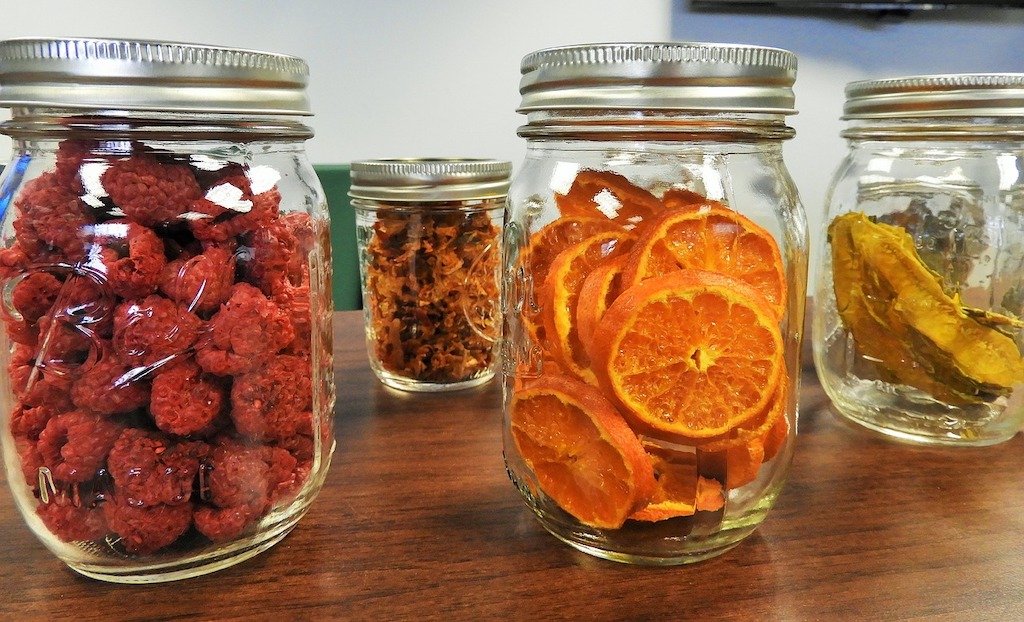
Lacto-fermentation
Everybody knows (and some actually love) Sauerkraut. But not all Sauerkrauts are created equal. Most commercially available types are produced using salt and vinegar and are pasteurised, which unfortunately, kills off the probiotic substances that make fermented foods like Sauerkraut so beneficial.
Sauerkraut is not the only way in which Cabbage can be fermented. A more interesting variation (to my taste, at least) is Korean Kimchi, which consists of a combination of different vegetables and spices. There are dozens of recipes and plenty of scope for experimentation.
The method of lacto-fermentation is simple, providing one has the right equipment. It does not take much, except a special fermentation crock-pot with a grooved rim. This rim should be half-filled with water, which, once covered with the lid, creates an airlock that prevents air borne bacteria or fungal spores from entering the pot. Another necessary item is a stone or weight to push down the vegetables and keep them submerged in the juices. For smaller amounts, airtight jars (pickling jars) can be used instead.
Cabbage, carrots, cauliflower, onion, garlic, horseradish, celery, bell peppers and pepperonis are well-suited for lacto-fermentation.
Suitable pickling spices include mustard seeds, peppercorns, allspice, juniper, cloves, fenugreek, ajowan, coriander, cumin, chillies, dill, fennel, tarragon, and bay leaves.
Finely cut or shred the vegetables and pack them tightly into the crockpot; sprinkle the spices between the layers of veggies. As the final layer, cover the veggies with a large cabbage or horseradish. Horseradish leaves will help to prevent mold. Prepare enough brine (1oz salt per liter of water) to pour over and cover the vegetables, but don’t fill the jar all the way to the top. (You can add a little whey to aid the fermentation process).
If you use fermentation crock-pot, half fill the rim with water (air-lock), place the stone on top of the vegetables and cover with the lid. Keep an eye on the water level in the airlock and replenish with water if it starts to evaporate. Place the jar or crockpot in a warm place for about 10 days, then move it to a cool one for another 6 weeks. Remove any mold that may have formed on the surface. Avoid removing the lid unnecessarily.
Canning
Canning is a great way to preserve foods. Almost anything can be canned and stored for later – and canned goods keep indefinitely, theoretically, at least. In practice, it is recommended to use canned foods within a year or two.
There are basically two different canning methods, one that is suitable for high acid foods, such as fruit, juices, and pickles, and one that is suitable for low acid foods, such as most vegetables, or meats.
There are many good canning recipes and it is best to choose a tried and tested one to avoid disappointment – especially if you are new to canning.
High acid foods are a little easier to process, as they do not require extreme heat to preserve them. Ordinary boiling is sufficient as the acid content inhibits the growth of harmful bacteria. Certain kinds of equipment make the process a great deal easier.
To preserve high acid foods, you need a large pot and rack (for holding the jars in place above the bottom of the pan), canning jars with two-part lids (lid with a rubber rim and band), a canning funnel, a jar lifter and lid magnet. A ‘head space’ measuring tool and bubble remover can also be useful.
The most important thing about canning is to make sure that all the equipment is squeaky clean and that the produce is immaculate and fresh. Don’t be tempted to preserve items that are on the verge of going off, or you will ruin the whole batch.
Prepare the foods according to your recipe, fill into the jars, and cover with a rubber ring and lid. The lids are held in place with a special little clamp. Canning machines have a rack that is placed at the bottom. If you are using a large pot, you need to find a rack that fits the pot. Place the jars on top of the rack and cover with water . Boil for a set amount of time (according to your recipe) to sterilize the jars.
For a detailed description of the process see:
Low acid foods require more care. Since they lack naturally occurring acids, they must be heated to a temperature that is well above boiling to kill any pathogens that otherwise might spoil the fruits of your labor. To achieve such high temperatures you will need a pressure cooker, preferably a purpose made one with a pressure gauge and thermometer.
As with the high acid foods, it is recommended to use a tried and tested recipe. Fill your food into clean jars, cover with lids and place the jars on the rack. Cover with water and sterilize according to the instructions of your recipe.
For a very useful and detailed description of the process, see this presentation:
Pickling
Instead of fermenting foods, many vegetables can be pickled in vinegar. This method is not as wholesome as the lacto-fermentation mentioned above, since it does not create probiotic bacteria in the process. Acid inhibits the growth of harmful bacteria, which is why it serves well as a preserving liquid.
The most important thing about pickling in vinegar is to use non-metal (except stainless steel) and non-plastic containers. Acids can react with such materials. Use glass or stoneware.
Fruit can be pickled in a vinegar /sugar syrup, to make delicious condiments.
Vegetables are often salted for a period of time (overnight) in order to draw out some of their water and to soften the skin. Wash and simmer them for a few minutes before covering them in vinegar and pickling spices. But not for too long. You’ll want the veggies to stay crunchy.
Some recipes call for a vinegar /sugar others for a vinegar /brine blend. Some recommend the vinegar to first be heated (and simmered with various spices) and then cooled before pouring it over the vegetables, other recipes call for hot vinegar. Pickling provides endless scope for experimentation.

Preserving in Oil
Oil in itself does not ward off bacteria, but it creates an effective barrier and thus prevents oxidation. To preserve vegetables in oil they are usually cooked in either brine or vinegar first, for a short period of time. The idea is to preserve the crunchiness. Place the veggies into a jar and cover with oil. Start with a layer of oil before adding the veggies, as this will prevent air bubbles. Make sure the contents remain covered in oil even once you start to use the preserve. Use good cooking oil – olive oil is ideal, as it has a good balance of fatty acids and resists oxidation.
Preserving in Sugar/Syrup
That sugar isn’t healthy is not the latest discovery of science. It depletes vitamin B1 and calcium and destroys the teeth. However, for certain things sugar is an ideal preserving agent – just as with any other harmful substance, there is a direct correlation between the level of damage and the amount consumed. Sugar preserves include jams, jellies, marmalade, syrup and candied fruit. For jams and jellies it is usually necessary to add pectin (or use preserving sugar) in order to achieve the proper consistency.
If you use lemon or orange peel in your recipes make sure it comes from organic citrus fruit.
Preserving nature’s bounty is an art and no novice will immediately master all methods. But it is a great joy to preserve the harvest and to create unique tasty treats, just exactly the way you like them. No commercial enterprise can even come close to that. All it takes is a spirit of experimentation and discovery.
It is also a lot of work – but it is SO worthwhile when, in the midst of winter, you can still feast on jars and cans filled with the sunshine and goodness of the previous harvest.
Resources:

Plant Profile:

Star of Bethlehem
Plant Profile: Star of Bethlehem (Ornithogalum umbellatum)
Family: Liliacae /allium family
I recently took up nature journaling, and when I sat in the garden looking for a suitable motif, I suddenly noticed a Star of Bethlehem growing at my feet. I had seen them in the vineyards many times, but hadn’t noticed them moving in with me.
Apart from giving them a friendly nod, I had never paid much attention to them. As far as I knew, they were not used for food or medicine; but hang on – didn’t Dr Bach revere this little flower and give it a prime spot as part of his Rescue Remedy formula?
I decided to take a closer look and dropped to my knees to study it in detail. I was immediately smitten by the Star’s sublime beauty and unusual features.
What is the Star of Bethlehem?
Star of Bethlehem is a small perennial bulbous plant of the Lily family (Asparagaceae). Its leaves die back even as it begins to flower. After flowering, its energy retreats into the underground bulb. During the ‘dormant’ period, it produces little bulbils that send up their own narrow leaves early in the following spring. The Star of Bethlehem is thermoperiodic, meaning that it needs to go through a period of low temperatures before it begins to flower.
The pretty, star-like flowers appear between April and June. The white petals have a green stripe on the underside that is only visible when the flower is closed. It looks as if the petal has fused with the sepal. But in fact, botanical descriptions of the plant say that the flower is composed of three identical sepals and petals, displayed in a single whorl. It is impossible to tell the difference, so botanists call them tepals. In the centre of the flower is a little crown of what looks like six white petals tipped by the pollen-bearing anthers. They enclose what looks like a little six-pointed star, from which the pistil protrudes.
Where does Star of Bethlehem grow?
You can find Star of Bethlehem growing in many places throughout Europe and North Africa. It arrived in the United States as a garden plant, which has naturalized to such an extent that the USDA now considers it a pesky weed.
Where did the name ‘Star of Bethlehem’ come from?
The origin of the name is attributed to various stories. The most obvious explanation is its widespread distribution in the Middle East and the Mediterranean Basin. Pilgrims on their way to Jerusalem carried the dried bulbs as food. (But fresh bulbs are reported as poisonous to cattle.) Another myth claims that the flower sprung from fragments of the Star of Bethlehem.
Is Star of Bethlehem known by any other names?
Indeed, it is, but none as charming. Star of Bethlehem is also known as Sleepy Dick, Nap-at-Noon, and even ‘Dove Dung’.
Nap-at-Noon alludes to the flower’s habit of ‘going to sleep’ in the afternoon and on cloudy days. The name ‘Dove Dung’ seems a bit insulting, apparently implying that the white ‘splash’ of the Star resembles bird doo-doo. It doesn’t, and in fact, it is not a reference to the supposed likeness. Instead, the name is a literal translation of the Latin name Ornithogalum, which means ‘bird’s milk’, a common euphemism for avian excrement. The species name ‘umbellatum’ refers to the umbel-like flower.

History
Gerard describes it as a type of wild onion and quotes Dioscurides, who mentioned that the bulbs are edible. Both the bulbs and the green parts are sold at markets in Turkey (Central, Bulancak) (1). Yet, they are also many sources that claim it is poisonous. So, what is the scoop?
Is Star of Bethlehem poisonous?
Biochemical research confirms that Star of Bethlehem contains cardioactive glycosides that are potentially toxic. But further investigation showed, that they do not survive being subjected to digestive juices, which would explain the controversy. An early study published by Arthur Vogelsang in 1961 notes that the effect of Star of Bethlehem is quite different depending on whether it is taken orally or injected. To test his hypothesis and confirm that the coating prevents the breakdown of the cardio-active compounds in the stomach. He compared Star of Bethlehem with Digitoxin and observed that its extract slowed the heart rate to a lesser degree than digitoxin while increasing the strength of the cardiac contraction and the excretion of body fluid. Star of Bethlehem also caused less nausea. Overall, Star of Bethlehem is a gentle yet highly effective heart drug that can be given to reduce blood pressure, strengthen the pulse and increase the discharge of excess fluid. It is particularly helpful for patients that do not tolerate digitoxin well.
Note of Caution:
The specific growing conditions, such as exposure to sunlight, water and soil type, change Star of Bethlehem’s chemical composition.
Is Star of Bethlehem used homeopathically?
In Homeopathy, the Star of Bethlehem is known by its Latin name, Ornithogalum umbellatum. It is used to treat persistent gastrointestinal problems, such as upper abdominal pain in the epigastric (central abdominal) region, pressure, malignant tumours of the digestive tract accompanied by depression, and feeling drained and exhausted. It is also indicated for patients suffering from a state of nervous exhaustion with high sensitivity to all types of stimuli.
What are the indications for Star of Bethlehem Bach Flower Remedy?
For Dr Bach, Star of Bethlehem was one of the most treasured flower remedies. He used it as a go-to Trauma remedy to buffer the effects of shock, such as unexpected bad news, the sudden loss of a loved one, an accident or other traumatic event. It can also help when facing the pain of past traumata (PTSD). It is one of the essential components of Rescue Remedy.
More articles:
Why Hawthorn is your heart’s best friend
Plant Profile: Hawthorn (Crataegus monogyna) When the Hawthorn dapples the hedgerows with its pinkish-white blossom, we know that spring is here to stay. Typically, Hawthorn starts to flower at the end of April or the beginning of May, which is why it is also...
Foraging Dandelion
Everybody loves Dandelions! Nothing gladdens the heart more than the sight of a meadow covered in its bright yellow bloom.
Stinging Nettles
Few herbs are as generous as the humble stinging nettle. Inconspicuous, it assumes a modest corner in the garden: untended areas, half in the shade, perhaps near the compost where the soil is rich with nitrogen. Inconspicuous that is, until one happens to brush against it carelessly – which jolts our awareness rather painfully.
Hayfever Remedies
If you suffer from hay-fever, you are probably not so well pleased with the arrival of spring. Pollen-laden air can be a source of misery. But a number of natural remedies can alleviate the symptoms.
Foraging Ramsons
Wild Garlic, or Ramsons are a forager’s delight! A marvellous spring tonic and delicious wild kitchen treat, this versatile herb can be used in many ways. This Pesto is just one idea.
Vinegar of the four thieves
There is a famous herbal formula, known as the Vinegar of the Four Thieves, which dates back to the times when Europe was ravished by the Black Death. Apparently, it had the power to fend off any ills!
The Camphor Tree
The characteristic scent of Camphor is familiar to anyone who has had a close encounter with VapoRub, but few have ever seen the pure, white crystalline substance from which the scent derives. Still, fewer are aware that this mysterious substance is entirely natural and comes from a tree that is native to southern China, southern Japan, and Taiwan. The Camphor Tree (Cinnamomum camphora) is closely related to the Cinnamon Tree, (Cinnamomum zeylanicum), with which it is sometimes confused. However, the unmistakable scent of the leaves immediately reveals its true identity.
Spring Detox
The idea of a body cleanse is to support the body’s eliminative functions in order to help it in the process of getting rid of accumulated metabolic waste products, which often linger on in a sluggish system.
Plant profile: Turmeric – Curcuma longa
Turmeric has a long history of use, not just as a spice, but also as a healing agent and a magical herb. As a spice, it is best known as one of the principal components of curry powder, to which it dons the characteristic yellow colour.
Ayurveda
Ayurveda is one of the oldest healing traditions in the world, spanning about 5000 years of unbroken practice. Often described as a philosophy of life rather than just a system of medicine, the name actually translates as ‘science of life’.
Birch (Betula sp.)
Description: The graceful birch tree has always held a special place in our hearts and minds. Traditionally she was perceived as a youthful Goddess of love and light. Yet, her soft feminine and almost fragile appearance belie her hardy nature. Birch is a tree of...
A strong immune system is your best defense
A strong immune system is your best defence. Garlic, ginger, lemon, turmeric and other common foods can help to keep the immune system strong.







